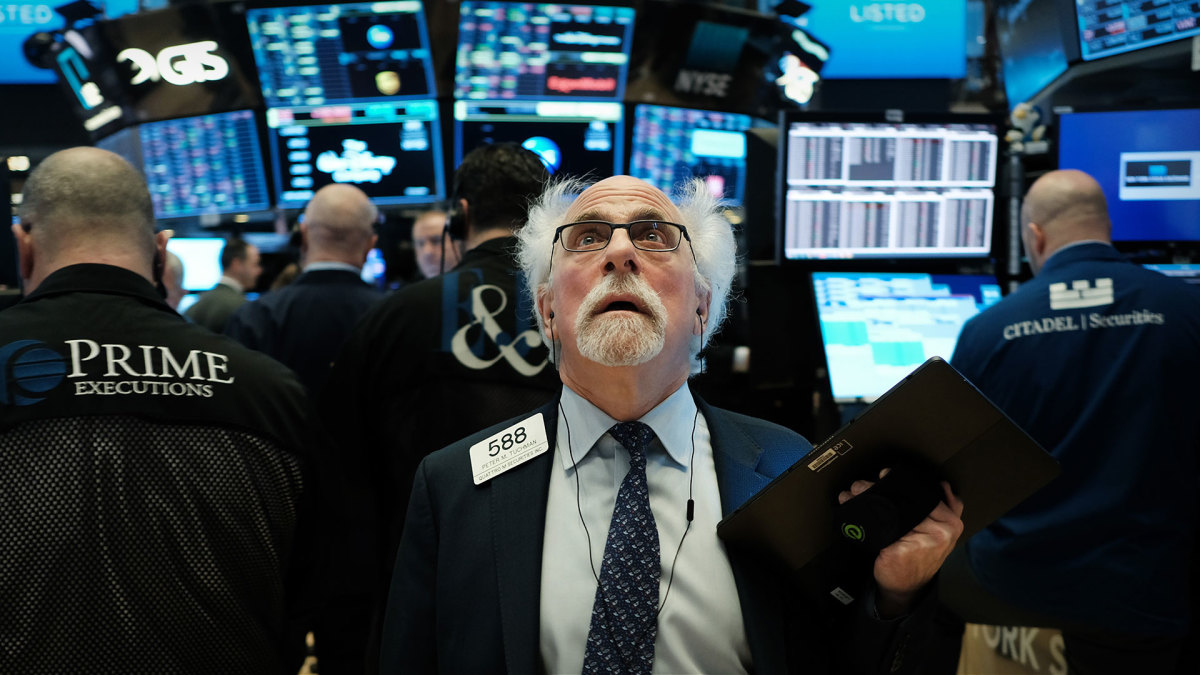
U.S. stocks are likely to get more expensive this year, a Wall Street analyst forecast Monday, but that isn't likely to stop the S&P 500 from adding to its recent run of all-time highs as earnings improve and the Federal Reserve ends its longest interest rate hold on record.
The S&P 500 has printed 34 all-time highs this year, taking its 2024 gain to just over 17% on the back of stronger-than-expected corporate earnings, a robust domestic economy and outsized gains for megacap tech stocks such as Nvidia, Meta Platforms and Google parent Alphabet.
Related: Suddenly, there's talk of 3 rate cuts this year
Those gains have raised concerns, however, about the sharp concentration of megacap stocks in the broadest benchmark of U.S. blue-chip shares and whether the underlying performance of the rest of the market warrants such consistent moves higher.
Stocks are also trading at valuations that top recent averages, with the price-to-earnings multiple of the S&P 500 is pegged at 21.2, compared with the five-year average of around 17.2, according to data from FactSet.

John Stoltzfus, Oppenheimer Asset Management's chief investment strategist, sees that valuation rising to around 23.1, derived from a year-end forecast of $255 a share for S&P 500 earnings, with further gains ahead.
Oppenheimer: Bull market has legs
Stoltzfus lifted his S&P 500 price target for the third time in seven months, adding around 400 points to his year-end level for the benchmark and pegging it at 5,900.
"The current bull market has legs," Stoltzfus wrote, adding that slowing inflation, a resilient job market and improving corporate earnings should add to recent market gains.
LSEG data suggest collective second quarter profits for the S&P 500 are likely to rise 10.1% from the year-earlier period to a share-weighted $492.8 billion, a tally about $5 billon lower than earlier forecasts.
For the whole of the year, analysts see earnings rising 10.6%, with a further 14.5% gain in 2025.
Related: Fed's Powell speech, CPI inflation to roil stocks this week
Last week's jobs report also points to the kind of soft landing for the U.S. economy that could support markets into the end of the year and beyond. A soft landing means easing inflation with no recession.
The Labor Department said 206,000 new hires were recorded in June, a stronger-than-expected tally that lifted the year-to-date total to around 1.4 million.
Wage gains, however, are starting to slow, suggesting inflation pressures are easing, a trend could become evident in the Commerce Department's report on the Consumer Price Index for June, which is expected to show a headline rate of 3.1%. The report is due out on Thursday, July 11.
Traders are betting on a dovish Fed
That has traders adding to bets on an autumn interest-rate cut from the Federal Reserve, which is seen as a key driver for U.S. stock performance after the longest stretch of no rate changes on record.
CME Group's FedWatch sees little to no chance of a Fed move in July, but pegs the odds of a September rate cut at around 77%, the highest since early spring.
Fed Chairman Jerome Powell's semiannual testimony to Congress, which resumes Tuesday with the Senate Banking Committee, may also provide a chance to prepare markets for an reduction in the autumn, or perhaps sooner.
"The 'data dependent' Fed continues to see the economy move in the direction they need to make that first cut," said Jay Woods, chief global strategist at Freedom Capital Markets.
Related: June jobs report bolsters bets on an autumn Fed interest rate cut
"If Powell chooses, he can become more dovish in tone based on recent trends and telegraph a potential July rate cut to Congress and a market that has been anticipating one for the better part of a year," he added.
Softer growth data could certainly support that thesis. The Atlanta Fed's GDPNow forecasting tool indicates a Q2 advance of just 1.5%, modestly higher than the 1.3% recorded over the first quarter. And ISM activity readings fell below the 50-point mark that separates growth from contraction last month.
Soft landing for economy could boost stocks
The balance Powell will need to find is between cutting too early to protect the labor market and risking a second-half spike in inflation, or waiting until late in the year (and after the presidential elections) and accelerating the risk of the economy tipping into recession.
Stock investors will need to perform a similar calculus, deciding whether a historically expensive S&P 500 can continue to weather the headwinds of high Fed interest rates, or the economy is slowing to such a degree that it will hammer consumer spending over the second half.
More Wall Street Analysts:
- Analyst updates Oracle stock price target after earnings
- Analyst reboots Trade Desk stock price target after Netflix deal
- Analysts adjust Micron stock price target ahead of earnings
David Bahnsen, chief investment officer at the Newport Beach, Calif., wealth manger Bahnsen Group, argues that this should put stock valuations at the forefront of investors' minds.
"The biggest risk for the stock market right now is excessive valuations," he said. "It's important for investors to think long and hard about any investment strategy that requires multiple expansion rather than earnings growth to generate a return."
"The need for overvaluations in stocks to correct is not just visible, it is inevitable," he cautioned.
Related: Veteran fund manager sees world of pain coming for stocks







